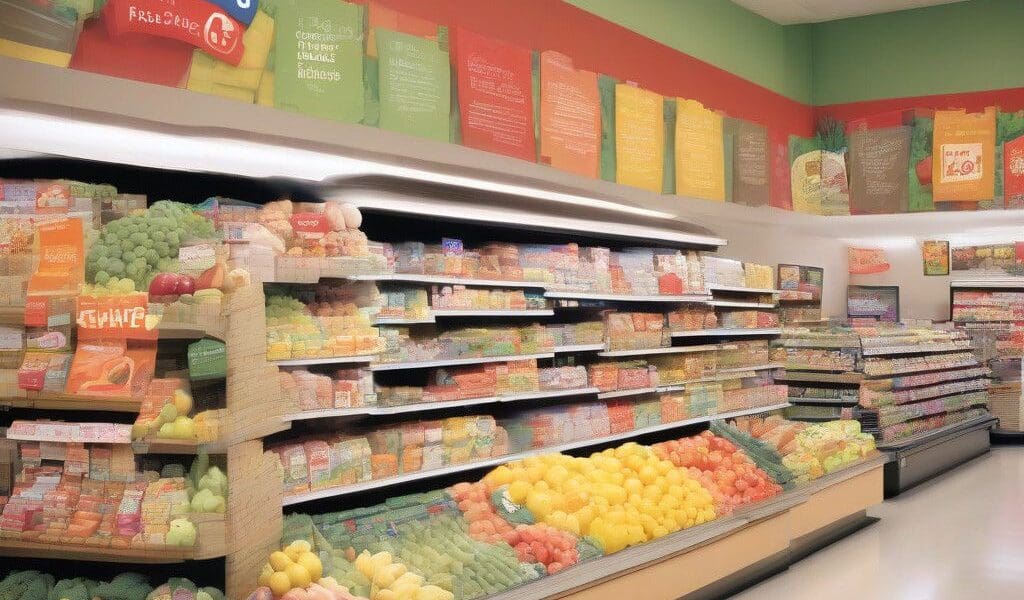In the competitive landscape of the grocery industry, capturing and retaining customers is more than just selling products. It involves understanding consumer behavior, preferences, and changing shopping habits. Save A Lot, a discount grocery chain, is taking innovative steps to engage with what they refer to as “uncommitted customers”—those who shop from multiple stores rather than being loyal to a single banner.
According to Alex Kinnier, CEO of Upside, studies indicate that most consumers shop at three or more grocery stores. This trend has been exacerbated by inflation and economic uncertainty, leading customers to seek the best deals and options available, which would have seemed inconceivable just a few years ago. The challenge lies in shifting this behavior towards loyalty and frequency at Save A Lot.
Strategies to Enhance Customer Engagement
Jennifer Hopper, CIO of Save A Lot, shared insights at Progressive Grocer’s Grocery Impact event on how the chain is addressing the needs of these shoppers through multiple strategies. One critical aspect discussed was the integration of delivery services. Recognizing the importance of convenience, Save A Lot began partnering with delivery platforms like Instacart, DoorDash, and Uber Eats.
“For us, delivery apps are essential in meeting customers where they are,” stated Hopper. By providing customers with the flexibility to shop online and receive groceries at home, Save A Lot aims to cater to the evolving preferences of their target audience. Since implementing these partnerships, the metrics reflect a notable increase in sales, highlighting the importance of aligning product access with consumer habits.
Additionally, Save A Lot is also focusing on inclusivity by enabling customers with health benefit cards, provided by Medicare Advantage or Medicaid, to purchase eligible items via Uber Eats. This unique approach not only offers convenience but acknowledges the diverse needs of their customer base.
Launching a Loyalty Program
In its quest to foster loyalty among its shoppers, Save A Lot recently launched a loyalty program called Save A Lot Rewards, available through a newly developed mobile app. This platform allows store partners to customize local offers and coupons, making promotions tailored to specific community preferences. According to Hopper, implementing localized strategies helps store owners differentiate themselves from national chains, fostering a sense of ownership and connection among local customers.
This community-focused approach is reinforced through the retailers’ physical infrastructure. Save A Lot is in the process of remodeling its stores to create a more inviting shopping environment. The renovation went beyond aesthetics; they also focused on integrating locally sourced products from nearby farmers or vendors. “By allowing each local store owner to curate their inventory with local offerings, we personalize the shopping experience for customers,” Hopper noted.
Innovative Partnerships and Acquisitions
An additional layer to Save A Lot’s strategic plan involves collaboration with Upside. This marketplace creates personalized promotions and offers that directly connect consumers with grocery stores, enabling them to reach new customer segments. Save A Lot has already seen impressive results from piloting this strategy, achieving a 91% acquisition rate of new customers and quarter-of-a-million signups to date.
The data collected through these initiatives will serve as a foundation for understanding their consumers better. As Hopper expressed excitement for the insights projected for 2025, she emphasized the importance of leveraging this information to enhance the overall customer experience.
Conclusion
In a market where customer loyalty is no longer a given, Save A Lot is setting a benchmark for how grocery retailers can adapt to meet diverse consumer needs. By integrating delivery services, developing an engaging loyalty program, personalizing store offerings, and harnessing data analytics through strategic partnerships, they are effectively turning uncommitted customers into loyal patrons.
The company is not just responding to changing shopping behaviors; they are proactively engaging their audience to ensure they remain competitive in the ever-evolving grocery landscape.












